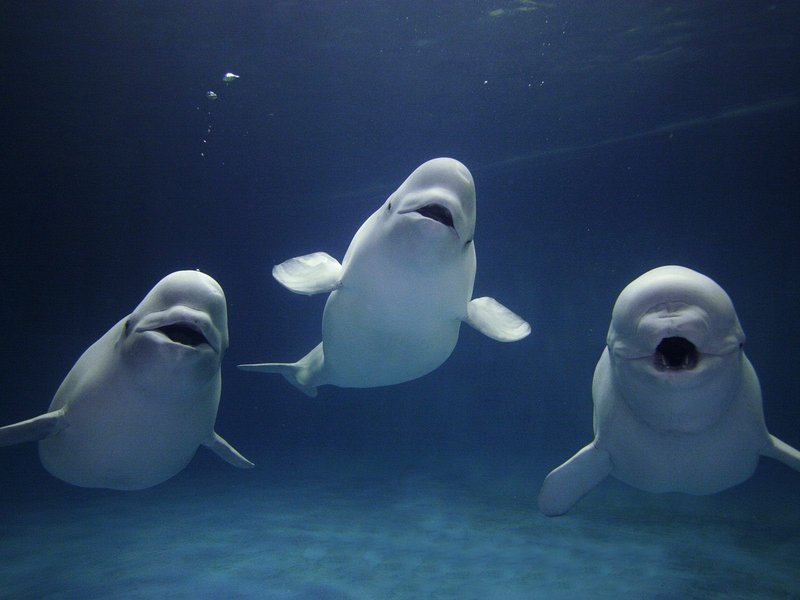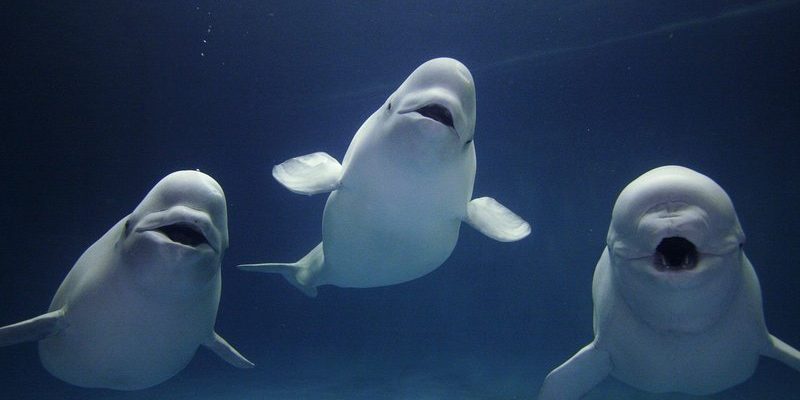
Navigating and communicating is like having a built-in GPS and a chatty group of friends all rolled into one! Belugas rely on echolocation and vocal sounds to find their way and keep in touch with their pods. Imagine being able to send out sound waves that bounce off objects and return to you, helping you “see” what’s around you without using your eyes. Sounds remarkable, right? Let’s dive deeper and explore the fascinating ways beluga whales manage these essential skills.
The Art of Echolocation
Echolocation is a superpower that beluga whales have mastered. This technique helps them navigate the often murky waters where visibility is low. Here’s how it works: when a beluga wants to find its way or locate prey, it releases a series of clicks and whistles. These sounds travel through the water until they hit an object, then bounce back to the whale.
Think of it like shouting in a cave and hearing your voice echo back. By listening to how long it takes for the sounds to return, belugas can determine how far away an object is and even what it is. This skill is crucial for hunting fish and avoiding obstacles in their environment. It’s incredible to consider how they create a mental map of their surroundings using nothing but sound!
Belugas also adapt their echolocation sounds based on their environment. In deeper waters, they might use lower frequencies that travel farther, while in shallow areas, they’ll switch to higher frequencies that give them more detail. This ability to fine-tune their “sound strategy” is a testament to their intelligence and adaptability.
Vocalizations: The Language of Belugas
When it comes to communication, beluga whales are anything but silent. They produce a variety of sounds, including clicks, whistles, and even howls. These vocalizations serve different purposes, from socializing with pod members to signaling danger. You might think of it like a group chat, where each sound has its own significance.
Each beluga has its own unique vocal signature, similar to how we have different voices. This uniqueness allows them to recognize each other, which is essential for maintaining social bonds within pods. Imagine texting a friend and immediately knowing who it is just by their writing style—belugas have a similar system with their calls.
Interestingly, research suggests that these vocalizations can change depending on the context. For example, a beluga might make softer sounds when interacting with a calf but switch to louder, more urgent calls when sensing danger. This dynamic communication helps them navigate social situations and respond to threats effectively.
Social Structures and Communication
Beluga whales are highly social creatures that often travel in groups known as pods. These pods can range from just a few individuals to several dozen, and they rely heavily on communication to maintain cohesion. The bonds formed within a pod are strong, and vocalizations play a key role in nurturing these relationships.
Within a pod, you’ll often see belugas engaging in playful behaviors, such as bubbling or surfacing together. These interactions strengthen their social ties and help them coordinate activities, like hunting. The sounds they make during these activities can signal excitement or alertness, making communication vital for their survival.
Moreover, they display a form of empathy towards each other. For instance, if one beluga is in distress, others might respond by swimming closer and offering support. It’s a heartwarming reminder of the social nature of these intelligent animals—just like how we reach out to friends in times of need.
Navigating Through Ice and Water
Beluga whales are often found in icy waters, especially in the Arctic and sub-Arctic regions. Navigating through shifting ice can be quite challenging, but belugas have adapted remarkably well. They can identify leads or cracks in the ice, using echolocation to find their way through the maze of icebergs and floes.
During the winter months, they sometimes find themselves in tight spaces due to freezing conditions. In these instances, their social structure becomes even more important. Coordinating movements with podmates allows them to find breathing holes and avoid getting trapped under the ice.
Belugas also exhibit incredible resilience. They can dive deep to find food or surface rapidly when necessary. Their ability to maneuver swiftly in icy waters showcases their adaptability and intelligence, making them true masters of their environment.
The Role of Olfactory Cues
While sound is essential for belugas, it’s not their only means of gathering information. Belugas have a well-developed sense of smell, which they use to detect food and recognize their surroundings. Although they don’t have a true sense of taste like we do, their olfactory capabilities help them distinguish between different types of prey.
When hunting, they may rely on smell to locate schools of fish. For instance, if a beluga detects a strong scent from a nearby school, it might follow that trail, almost like tracking a breadcrumb path. This multisensory approach enhances their ability to find food in various environments, proving that they are not just reliant on echolocation alone.
Additionally, these olfactory cues can facilitate communication. For example, young belugas may recognize their mothers by their unique scent, helping them stay close in the vast ocean. This aspect of beluga communication adds another layer of complexity and richness to their social interactions.
Challenges to Navigation and Communication
As fascinating as beluga whales are, they face challenges that can impact their navigation and communication. Factors like climate change and human activities have introduced noise and pollution into their habitats, which disrupts their ability to echolocate and communicate effectively.
Increased shipping traffic and industrial noises can drown out their vocalizations, making it difficult for them to hear each other. This disruption can lead to stress and confusion, especially in situations where they need to coordinate movements or warn each other of dangers. It’s like trying to have a conversation in a bustling café—very challenging!
Moreover, habitat loss due to melting ice is a pressing concern. As ice diminishes, belugas are pushed to adapt to new environments, which can alter their communication styles and navigation methods. Protecting their habitat and reducing noise pollution are essential steps we can take to support the survival of these remarkable creatures.
Conservation and the Future
The future of beluga whales depends not just on their ability to navigate and communicate, but also on our efforts to protect them. There are ongoing initiatives aimed at conserving their habitats and reducing threats to their populations. From establishing marine protected areas to conducting research on their behavior, every step counts.
You can play a role, too. Supporting organizations that focus on marine conservation, spreading awareness, and making sustainable choices can all contribute to the health of our oceans. After all, when it comes to protecting the incredible beluga, every action matters.
In conclusion, the beluga whale’s ability to navigate and communicate is a marvel of nature. From their echolocation skills to their intricate vocalizations, these creatures have developed remarkable strategies to thrive in their environment. As we learn more about them, let’s also commit to ensuring their future in our ever-changing world. Together, we can help keep the songs of the belugas echoing through the seas for generations to come.

